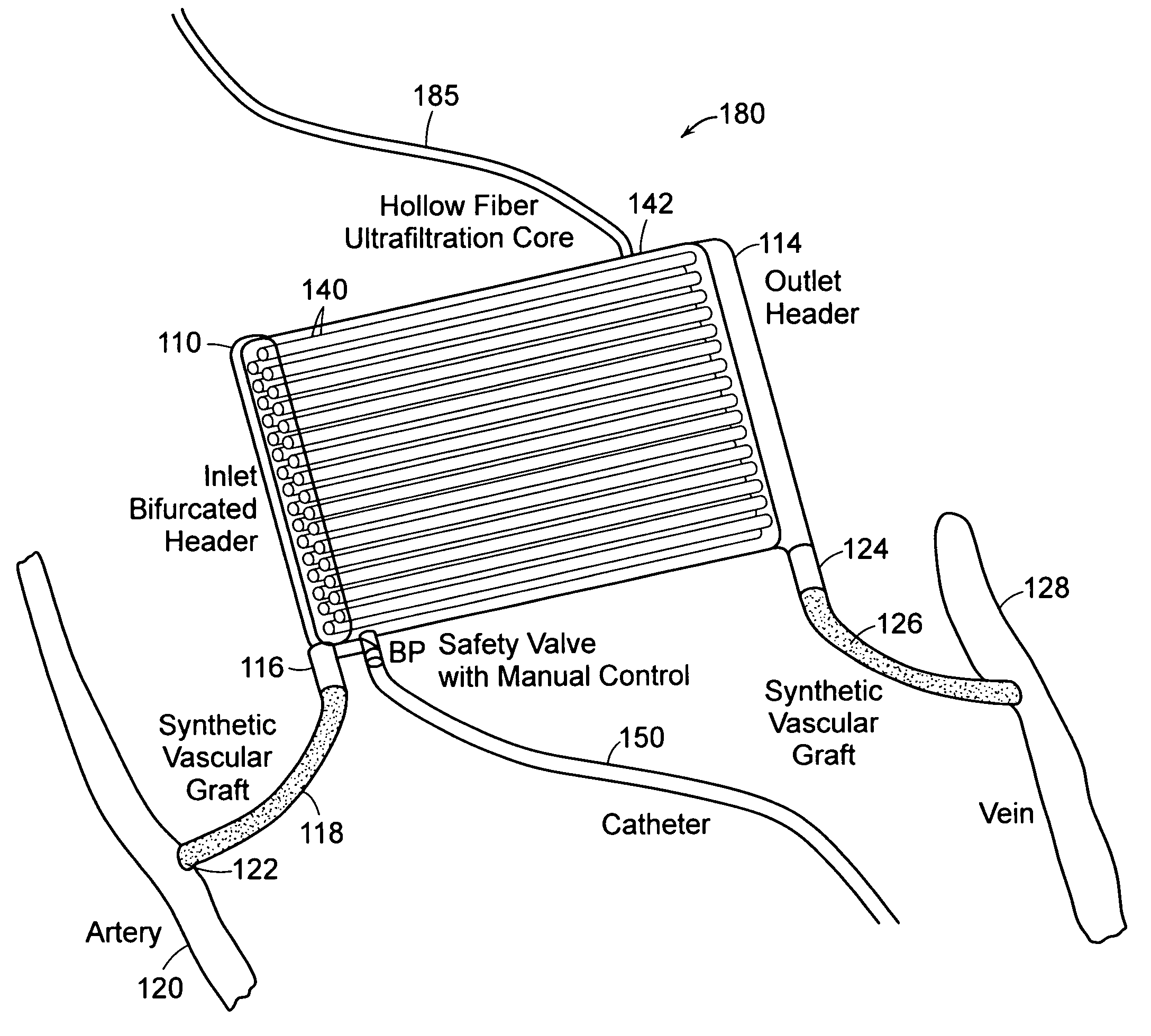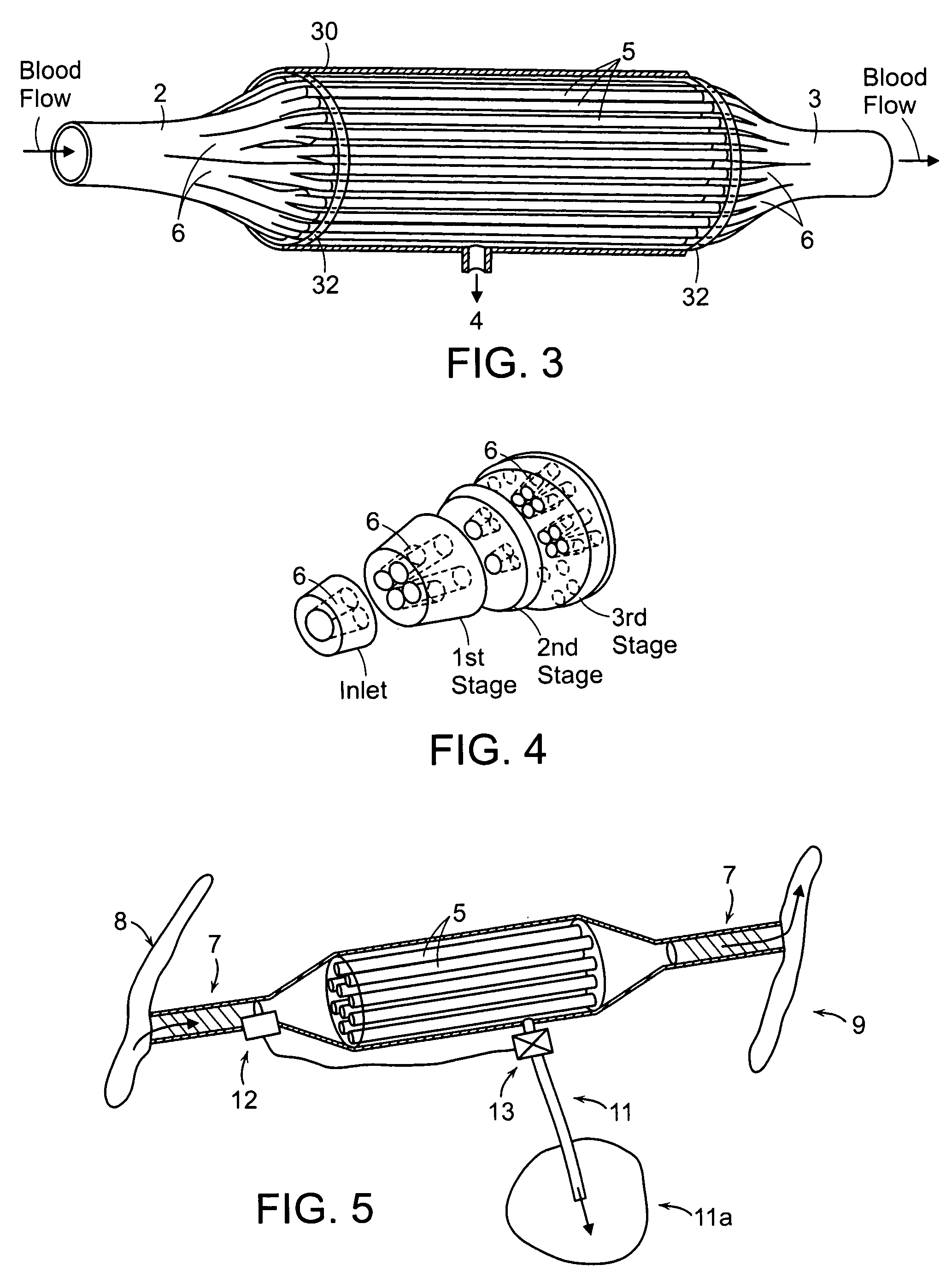The excess fluid first accumulates in the blood and expands the volume of blood leading to hypertension and places
increased stress on the heart.
The fluid also can accumulate in the pleural cavities of the lungs leading to shortness of breath.
Again, if this condition is not reversed, death can result.
In ESRD patients, fluid accumulates because their kidneys no longer can effectively remove the water and other fluids, which are consumed daily.
Removal of the large amounts of water in severe cases of fluid overload often causes fatigue and
nausea and, in some cases, arrhythmias, “crashing,” and heart failure.
Frequently because of continual
thirst, however, these fluid restrictions are not complied with because of the hardship they impose on the
quality of life of these patients.
However, repeated increases and decreases in
blood volume may also eventually lead to damage to the heart and vascular
system, thus further increasing the risk of cardiac
disease.
For those patients with residual
kidney function, this chronic hypertension may cause rapid decay of this residual
kidney function leading to the
high mortality rates of the general ESRD
population rather than the
lower mortality rates of those ESRD patients with some residual
kidney function.
In CHF patients, there is a progressive deterioration of the heart
muscle that leads to an inability to pump enough blood to support the vital organs.
As a result, fluid retention occurs because the blood
perfusion pressure in the kidneys is reduced and the kidneys become inefficient in removing fluid.
While fluid overload in CHF patients can often be treated with numerous pharmacological agents, these drugs become gradually ineffective over time and may also cause undesirable effects such as kidney failure.
The procedures are carried out on machines that must be plugged into an electrical circuit and therefore the patients have
limited mobility during the typically thrice weekly, 4-hour procedures.
Because
ultrafiltration is generally carried out during a standard
dialysis session, the excessive
water volume must be removed in this 4-hour period, which places additional physiological burdens on the patients.
Excessive fluid removal often leads to a significant drop in the patient's
blood pressure (hypotension), which can lead to hemodynamic
instability and
fainting, cardiac arrest, or death.
However, the complexity and immobility of home
dialysis procedures as well as the medical complications, such as infection and scarring, associated with long-term
peritoneal dialysis, severely restricts the use of these ultrafiltration procedures to effectively treat hypervolemia.
Another drawback of conventional ultrafiltration is the need to use anticoagulants, such as
heparin or citrate, to prevent the blood from clotting in conventional ultrafiltration devices.
Prolonged use of anticoagulants presents a
significant risk to patients in general because of the possibility of uncontrolled bleeding occurring and particularly to the majority of ESRD patients who are undergoing thrice weekly
hemodialysis procedures during which they also receive anticoagulation.
An additional drawback of the
adaptation of conventional ultrafiltration to the
continuous treatment of hypervolemia resides in the complications of blood access and the use of pumps.
Notwithstanding the complications associated with the long term use of these blood access devices, they require the use of special blood pumps in the
extracorporeal circuit in order to generate the flow rates and
perfusion pressures required to achieve fluid removal in the ultrafiltration device.
Blood access catheters that are placed in
high pressure arteries have been utilized to obviate the need for additional pumping mechanisms to achieve the
blood flow rates and pressures required, but safety concerns for their use outside an
intensive care environment render them impracticable.
However, the use of these systems for continuous applications has been hampered by a number of technical hurdles relating primarily to
blood clotting and
biocompatibility.
Firstly, the cartridges contain a large number of small
diameter hollow
fiber membranes, which presents a large contact surface for
filtration and
toxin clearance.
While this anticoagulation is medically acceptable over the relatively short period of the
hemodialysis or
hemofiltration sessions, long-term chronic use of
high doses of anticoagulants is medically unacceptable.
Even with the use of anticoagulation,
continuous use in an
extracorporeal circuit of existing dialyzers is generally not possible for more than approximately 48-72 hours.
This inherent
thrombogenicity of the existing hollow
fiber ultrafiltration devices is further complicated by the design of the inlet and outlet elements of the cartridges which are used in existing devices to (i) distribute blood from a single inlet conduit to the large number of hollow fiber membranes and (ii) to collect the blood from the large number of hollow fiber membranes and channel the blood to a single outlet conduit.
Furthermore, these elements do not distribute the blood uniformly to all the hollow fiber membranes resulting in significant differences in
blood velocity and performance within different areas of hollow fiber membranes.
Secondly, long-term blood access continues to be problematic.
Percutaneous catheter use in hemodialysis patients is plagued with issues related to bleeding, infection, and clotting that require a high level of attention to maintain these blood conduits patent for use.
There have been some recent developments in
catheter design that may improve these catheters, but currently they are unsatisfactory for long-term use due to the persistence of the previously mentioned blood access problems.
 Login to View More
Login to View More  Login to View More
Login to View More 


